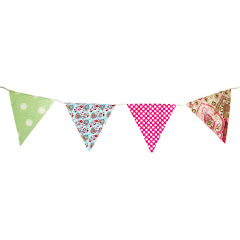For those who are blessed with having some yard space, why not give back to nature and have your little ones help out with planting a butterfly garden. A butterfly garden will not only spruce up your backyard but will help your child understand the relationship between plants and animals. I found this great article on KidsGardening.org which tells you how to plan out your garden, what plants and flowers to buy and how to make a butterfly feeder. If you click through to the article, they even provide a PDF of a fully illustrated butterfly and hummingbird yard plan.
Enjoy!
************************************************************
One of the most interesting theme gardens you can plant with your children is a butterfly garden. A butterfly garden provides a colorful array of nectar-producing plants that not only attract butterflies and hummingbirds, but can also draw your children to explore the intricate relationships of plants and animals. With the appropriate plantings, your garden provides opportunities to educate your children about the life cycle of a butterfly and allows them to view each stage of growth. What do you need to establish a butterfly garden? The basics include at least six hours of sunlight, colorful flowering plants, and leafy “host plants” that attract egg-laying butterflies and provide food for the larvae.
When selecting plants, choose a variety of species that bloom throughout the growing season. This will help lure the butterflies to your garden for longer periods. Butterflies are most active from midsummer to late summer, so make sure your plants offer a wide assortment of blooms at that time of year.
A sample garden plan is attached below. Popular perennials for your garden include aster, sunflower, milkweed/butterfly weed, lilac, and purple coneflower. Annuals are a great addition, too, as they bloom and attract butterflies throughout the season while providing a continual nectar supply. Popular annual varieties include petunia, annual aster, marigold, and verbena species.
Once the garden is planted, stand back and wait for the butterflies to stop by. With a successful butterfly garden, your children will be able to observe the developmental process of a butterfly. The eggs soon hatch, and the larvae appear and eat the leafy growth of the host plant, eventually developing into full-grown caterpillars. Remember, you will need to tolerate some leaf damage from your very hungry garden guests. Later, these caterpillars affix themselves to a twig or branch and form a chrysalis, entering the pupa stage. Within about two weeks, they metamorphose into butterflies and re-emerge.
A fun activity you can do with your children is to create homemade butterfly feeders. To do this, simply drill a tiny hole in the top of a small jar (baby jars are great). Fill the jar with a 10% sugar/90% water mixture. Be sure to use warm water to help quickly dissolve the sugar granules. Next, have your children cut some colorful fabric petals to glue along the top of the lid. Use fishing line to hang your flower jar feeders within or next to your butterfly garden. Make sure to change this mixture regularly in hot weather to avoid mold growth.









No comments:
Post a Comment